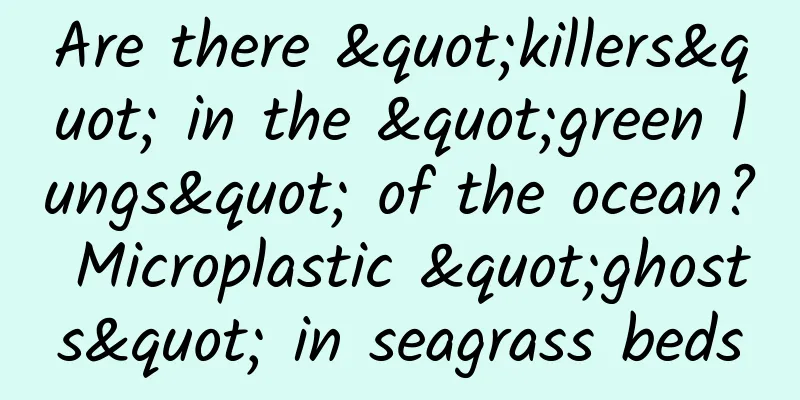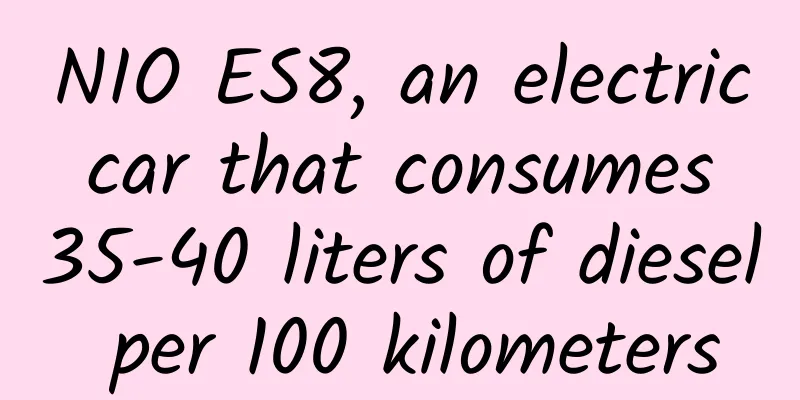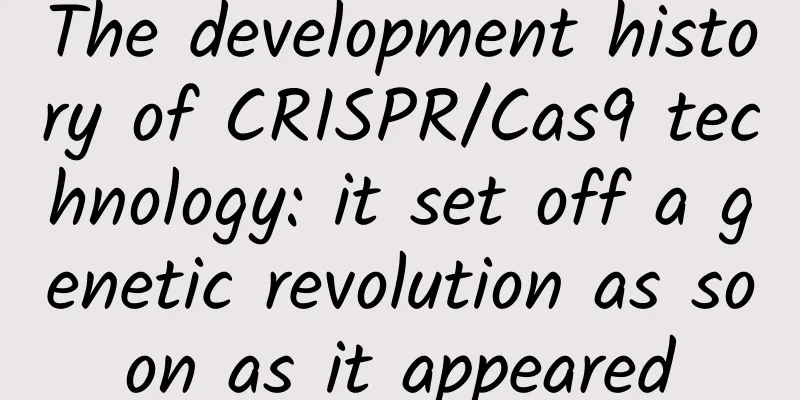Are there "killers" in the "green lungs" of the ocean? Microplastic "ghosts" in seagrass beds

|
Produced by: Science Popularization China Author: Yuan Yuan (Master’s student jointly trained by Institute of Oceanology, Chinese Academy of Sciences and Qingdao University of Science and Technology) Producer: China Science Expo In 2022, a study published in the journal Environment International showed that microplastics were found in human blood for the first time. Not only that, researchers also said that plastics may have spread throughout the human body's organs, a phenomenon that has attracted public attention. In recent years, more and more studies have shown that microplastics enter the food chain through the marine ecosystem and are eventually detected in the human body, revealing their migration path between the environment and organisms. Microplastics found in human blood for the first time, study shows (Image source: Sciencedirect screenshot) As the "green lungs" of marine ecosystems, seagrass beds play a vital role in maintaining biodiversity, carbon fixation and coastline stability. However, microplastics (plastic particles with a diameter of less than 5 mm) are difficult to degrade and easy to spread, posing a serious threat to the seagrass bed ecosystem. Therefore, with the intensification of human activities, this new type of pollutant has become an ecological crisis that cannot be ignored in the seagrass bed ecosystem, seriously threatening its health and sustainable development. Oceans polluted by microplastics (Photo source: Sohu.com) Seagrass bed ecosystems polluted by microplastics (Image source: AI model) Seagrass beds are the guardians of the ocean ecosystem Why are seagrass beds called the guardians of marine ecology? Seagrass beds play a vital role in the marine ecosystem, and their ecological functions are extensive and far-reaching. Seagrass beds are an important part of the marine ecosystem, providing habitats and food sources for many marine animals. Small benthic organisms, large fish and sea turtles all rely on seagrass beds for food and shelter. Seagrass and its decomposition products, such as detritus, are the main food for herbivores such as green turtles, dugongs and manatees. In addition, seagrass beds provide reproductive shelter and rich nutrition for fish and invertebrates. Underwater seaweed (Photo source: veer photo gallery) Seagrass beds also absorb suspended particles through their leaves, reducing water turbidity, and their roots can fix sediments, prevent silt from re-suspension, and maintain water quality. Seagrass absorbs nutrients such as nitrogen and phosphorus in the water, preventing algae outbreaks and maintaining ecological balance. At the same time, seagrass beds can slow down wave impacts, protect coastal areas, and reduce the risk of erosion. More importantly, seagrass absorbs carbon dioxide in the global carbon cycle, forming a "blue carbon" reservoir, which can store carbon for a long time and effectively slow down global warming. Therefore, seagrass beds are crucial in protecting the health and ecological balance of the ocean. Seagrass beds: habitat for marine animals (Image source: IF diving) Seagrass beds are vectors of microplastic pollution Seagrasses usually grow in shallow intertidal or subtidal areas, which are often affected by human activities and have a large amount of microplastic input from land. What is the current status of microplastic pollution in seagrass beds affected by human activities? Let's take a look: Seagrass blades are an important "sink" for microplastics in the seagrass bed ecosystem. Microplastics adhere to seagrass blades because epiphytic bacteria on seagrass blades secrete sticky substances during growth, reproduction and metabolism. According to a study published by Katherine L. Jones et al. in the Marine Pollution Bulletin, the average number of microplastics detected on seagrass blades in the Deeres Bay area was 4.25±0.59 (n=60), mainly in the form of fibers, flakes and fragments, and mainly white in color; Hayley Goss et al. also published a study in the Marine Pollution Bulletin, stating that microplastics were found on 75% of the leaves in the Tailai grass beds in the Turneffe Atoll Marine Reserve in Belize. Sediments are another important sink for microplastics in seagrass bed ecosystems. Research by Lingchao Zhao et al. in Environmental Pollution showed that the abundance of microplastics in the sediments of Huiquan Bay, Sanggou Bay, Shuangdao Bay, and Changdao eelgrass beds in Shandong Province was 440±39.2 items/kg, 208±33.3 items/kg, 238±31.2 items/kg, and 159±17.9 items/kg, respectively, which was 30.2%, 47.5%, 102.0%, and 67.3% higher than that in bare seagrass areas. In addition, because seagrasses can absorb dissolved nutrients and particles, they may also become carriers of microplastics. At the same time, microplastics have also been found in the bodies of common inhabitants of seagrass bed ecosystems, such as sea cucumbers and sand dollars. Their main form is fiber, and their colors are mainly black and blue. However, compared with microplastics in sediments and seagrass leaves, the average size of microplastics in organisms is smaller. Therefore, microplastics are not only ubiquitous in seagrass and sediments, but also accumulate through the food chain, posing a potential threat to the health and biodiversity of seagrass bed ecosystems. Potential relationships between biota and microplastics in seagrass bed ecosystems (Image source: Reference 6) Three major sources of microplastics in seagrass beds The sources of microplastics in seagrass beds are mainly land, ocean and atmosphere. Land sources include sewage discharge from municipal sewage treatment plants, urban runoff, and agricultural runoff. For example, microplastic components in skin care products, detergents, and other products used in daily life are difficult to remove during sewage treatment due to their small particles, and thus will enter the ocean with sewage discharge and further enter the seagrass bed ecosystem. In addition, plastic covering films and pesticides used by humans in agricultural activities will also produce microplastics, which will enter the seagrass bed through runoff when washed by rainwater. Wastewater Falls (Photo source: veer photo gallery) The ocean sources are mainly caused by human activities. For example, the aging and damage of floating devices and the discarding of garbage such as feed bags during offshore aquaculture; plastic garbage discarded by ships during navigation and fishing, such as plastic bottles, broken fishing nets and ropes; these plastic garbage discarded in the ocean gradually decompose into microplastics under the action of sunlight and waves, and accumulate in seagrass beds. Fishing Net (Photo source: veer photo gallery) Atmospheric sources occur through particle deposition, rainfall events, and aerosol adsorption. For example, microplastic particles formed by the decomposition, abrasion, or other mechanical effects of plastic products will be carried into the air by the wind. Among them, microplastic particles with larger particle sizes may directly settle into the seawater, and microplastic particles with smaller particle sizes may be captured by clouds and fall to the sea surface through rainfall. Some microplastics will form atmospheric aerosols and be spread over long distances to the sea surface by wind. Ultimately, these pathways will cause microplastics to be deposited in the seagrass bed ecosystem. In summary, multiple sources from land, ocean and atmosphere jointly promote the input and deposition of microplastics into seagrass bed ecosystems. These microplastics not only pose a potential threat to the health of seagrass bed organisms, but may also further affect the structure and function of the ecosystem. In order to effectively protect the seagrass bed ecosystem, it is urgent to strengthen the management of microplastic pollution sources, take effective measures to reduce the generation and emission of microplastics, and promote in-depth research on the migration, enrichment and ecological effects of microplastics in the ecosystem. Sources of microplastics in seagrass beds (Source: Reference 3) Microplastics are becoming the "invisible killer" of the seabed As a persistent pollutant, microplastics not only affect the growth and development of seagrass, but may also carry and release harmful substances, exerting chemical and biological dual pressures on seagrass and its ecosystem. These impacts will not only weaken the ecological functions of seagrass beds, but may also affect the wider marine community and human health through the food chain. First, microplastics can affect the healthy growth of seagrass beds. Microplastics have a significant impact on the healthy growth of seagrass beds. Studies have shown that these tiny particles can cause physical damage to seagrass leaves and roots, affecting their normal physiological functions. The attachment of microplastics to the surface of seagrass leaves blocks the penetration of light and interferes with photosynthesis, resulting in limited growth and even death of seagrass. In experiments at different concentrations, low concentrations of microplastics (such as 10 and 50 mg/L) had little effect on the photosynthesis of seagrass and epiphytes, showing a certain degree of adaptability. However, when the concentration of microplastics reached 100 mg/L and above, photosynthetic activity decreased significantly, which may be related to the toxic leachate of microplastics and their adsorption of heavy metals. At the same time, the dark respiration rate at high concentrations also decreased significantly, indicating that microplastics may inhibit the energy conversion capacity of seagrass by affecting its metabolic process, thereby having a negative impact on long-term growth and health. Although seagrass has shown adaptability to a certain extent, the potential negative effects at extremely high concentrations cannot be ignored. In particular, the accumulation of microplastics may have a chain reaction on herbivores that rely on seagrass and the entire food chain, ultimately affecting the sustainable development of fisheries. Second, microplastics affect the biogeochemical cycles of seagrass beds. When plastic particles in the atmosphere settle into the ocean, they will affect the content of trace elements such as nutrients (such as nitrogen and phosphorus) in the seagrass bed ecosystem, and change the nitrogen and phosphorus cycle path and rate of the seagrass bed ecosystem. This situation may affect the community structure and primary production process of the seagrass bed, and may also affect the seagrass bed ecosystem's absorption of atmospheric carbon dioxide and carbon burial capacity. As seagrass bed ecosystems degrade, their ability to fix and store carbon for the ocean will be weakened, which will in turn affect the global carbon cycle and reduce the role of the ocean in addressing climate change. Third, microplastics will affect the ecological balance of seagrass beds. When microplastics absorb harmful substances in the water (such as heavy metals and persistent organic pollutants) and interact with seagrass, or are deposited around seagrass beds, seagrass blades accumulate microplastics, which can lead to the accumulation of harmful substances. Experiments show that high concentrations of plastic pollution significantly reduce the decomposition rate of seagrass debris, which in turn affects the release of nutrients and has a negative impact on the nutritional dynamics of seagrass. While the rate is slowing down, the gradually accumulated microplastics are more likely to be ingested by benthic organisms, and then passed to higher trophic levels through the food chain, affecting the health of the entire seagrass bed ecosystem and ultimately destroying the ecological balance of the seagrass bed. In addition, microplastics may also serve as carriers of alien species or pathogens, spreading to seagrass beds with the help of ocean currents or other environmental factors. These alien species or pathogens may destroy the original ecological balance of seagrass beds, invade the habitats of local species, and lead to a decline in marine biodiversity. Seagrass has its own "natural shield" However, seagrass is not helpless in the face of microplastic pollution. It also has a self-protection mechanism. The first is the formation of biofilms . Biofilms can form on the surface of seaweed leaves. These biofilms contain bacteria and other microbial communities, which slow down the attachment and impact of microplastics by competitive adsorption, degradation of microplastics, or changing the physical and chemical properties of microplastics. Secondly, seagrasses adapt to environmental changes, including potential microplastic pollution, by adjusting their photosynthesis efficiency. Some studies have shown that under the pressure of microplastic pollution, seagrasses may mitigate potential damage by adjusting their photosynthesis pathways. Finally, seagrass roots consolidate sediments, reducing the amount of suspended microplastics in the water, thereby reducing the risk of exposure to seagrass and other organisms. Seagrass captures microplastic debris (Image source: Reference 8) Tackling microplastic pollution and creating a healthy ocean Seagrass beds are an important part of the marine ecosystem and provide important ecological services. Due to the high concentration of microplastics in seagrass beds, we must take measures to reduce plastic pollution, strengthen its protection and restoration, and maintain the health and sustainable development of the ocean. Let us start with ourselves, protect the seagrass beds together, and leave a beautiful and healthy ocean for future generations! Slogans for protecting seagrass beds (Image source: self-made by the author) References: 1. Li Wentao, Zhang Xiumei. Ecological functions of seagrass meadows[J]. Journal of Ocean University of China (Natural Science Edition), 2009, 39: 933-939. 2. Zhou Yi, Xu Shaochun, Zhang Xiaomei, et al. Habitat construction technology of seagrass beds in marine ranches[J]. Science and Technology for Development, 2020, 16(02): 200-205. 3. Hou Shuailing, Fan Jinluo, Ren Guoliang, et al. Research progress on detection methods, occurrence characteristics and toxicological effects of microplastics in seagrass bed ecosystems[J]. Journal of Ecotoxicology, 2023, 18(6): 112-126. 4. Chen Mengling, Gao Fei, Wang Xinyuan, et al. Distribution, ecological effects and carrier role of microplastics in the ocean[J]. Marine Science, 2021, 45(12): 125-141. 5. Sun Chengjun, Jiang Fenghua, Li Jingxi, et al. Research progress on the source, distribution and ecological and environmental impact of microplastics in the ocean[J]. Advances in Marine Science, 2016, 34(04): 449-461. 6. Changjun L, Lixin Z, WenTao L, et al. Microplastics in the seagrass ecosystems: A critical review. [J]. The Science of the total environment, 2023, 902 166152-166152. 7. Gerstenbacher CM, Finzi AC, Rotjan RD, et al. A review of microplastic impacts on seagrasses, epiphytes, and associated sediment communities [J]. Environmental pollution, 2022, 303: 119108. 8.Anna VS,Miquel C,P. WHD, et al. Seagrasses provide a novel ecosystem service by trapping marine plastics [J]. Scientific Reports, 2021, 11 (1): 254-254. 9.Goss H, Jaskiel J, Rotjan R. Thalassia testudinum as a potential vector for incorporating microplastics into benthic marine food webs[J]. Marine pollution bulletin, 2018, 135: 1085-1089. 10.Digka N, Tsangaris C, Torre M, et al. Microplastics in mussels and fish from the Northern Ionian Sea[J]. Marine Pollution Bulletin, 2018, 135: 30-40. 11.Li J, Yang D, Li L, et al. Microplastics in commercial bivalves from China[J]. Environmental pollution, 2015, 207: 190-195. 12. Huang Y, Xiao X, Xu C, et al. Seagrass beds acting as a trap of microplastics-Emerging hotspot in the coastal region[J]. Environmental pollution, 2020, 257: 113450. 13.Molin JM, Groth-Andersen WE, Hansen PJ, et al. Microplastic pollution associated with reduced respiration in seagrass (Zostera marina L.) and associated epiphytes[J]. Frontiers in Marine Science, 2023, 10: 1216299. 14.Jones KL, Hartl MGJ, Bell MC, et al. Microplastic accumulation in a Zostera marina L. bed at Deerness Sound,Orkney, Scotland [J]. Marine Pollution Bulletin, 2020,152: 110883 15. Zhao LC, Ru SG, He JL, et al. Eelgrass (Zostera marina) and its epiphytic bacteria facilitate the sinking of microplastics in the seawater [J]. Environmental Pollution, 2022, 292: 118337 |
<<: Why don’t hotels check rooms nowadays? What should I do if something is lost?
>>: China CDC: Currently more than 99% of influenza viruses are influenza A! Urgent reminder →
Recommend
How to use Baidu experience for online promotion?
We all know that there are many ways of online pr...
Xiaohongshu Promotion丨How to quickly create popular notes!
I have a strong interest in customer acquisition,...
How to choose selling points for advertising? Analysis of promotional materials for the financial industry
Let’s test you today. Taking the financial indust...
Methods and techniques to build a brand without spending money
Everyone must like the idea of building a brand...
What fields are good for short videos? Which type of short video is better?
Now, no matter what industry it is, it can be mon...
Case Analysis: How does Kugou increase its user base?
This is the fifth article I have written about gr...
The long-awaited "WeChat Customer Service" is here. The official website is now online
Many people complain that WeChat has no customer ...
How to obtain OAuth2 authentication interface in WeChat Enterprise Account Development
URL links in enterprise applications (including l...
Forbes: Five major trends including mobile APP will drive technology stocks to continue to rise next year
Forbes magazine recently published an article on ...
National Primary and Secondary School Students Safety Education Day丨"Naughty children" playing with fire in the elevator almost caused a disaster! Please remember the fire safety knowledge
Today is the 27th National Safety Education Day f...
The latest research found that comets from outside the solar system originally ran away from the solar system!
Comets from outside the solar system, some of the...
How do brands choose UP hosts on Bilibili for promotion?
Bilibili has special platform attributes. From a ...
Where is the arrow of time heading? Physicists are uncovering the mystery of the "arrow of time"
So far, people's understanding of time has al...
Understand the advertising process in 2 minutes, from account opening to optimization!
Search promotion is a pay-per-performance online ...









